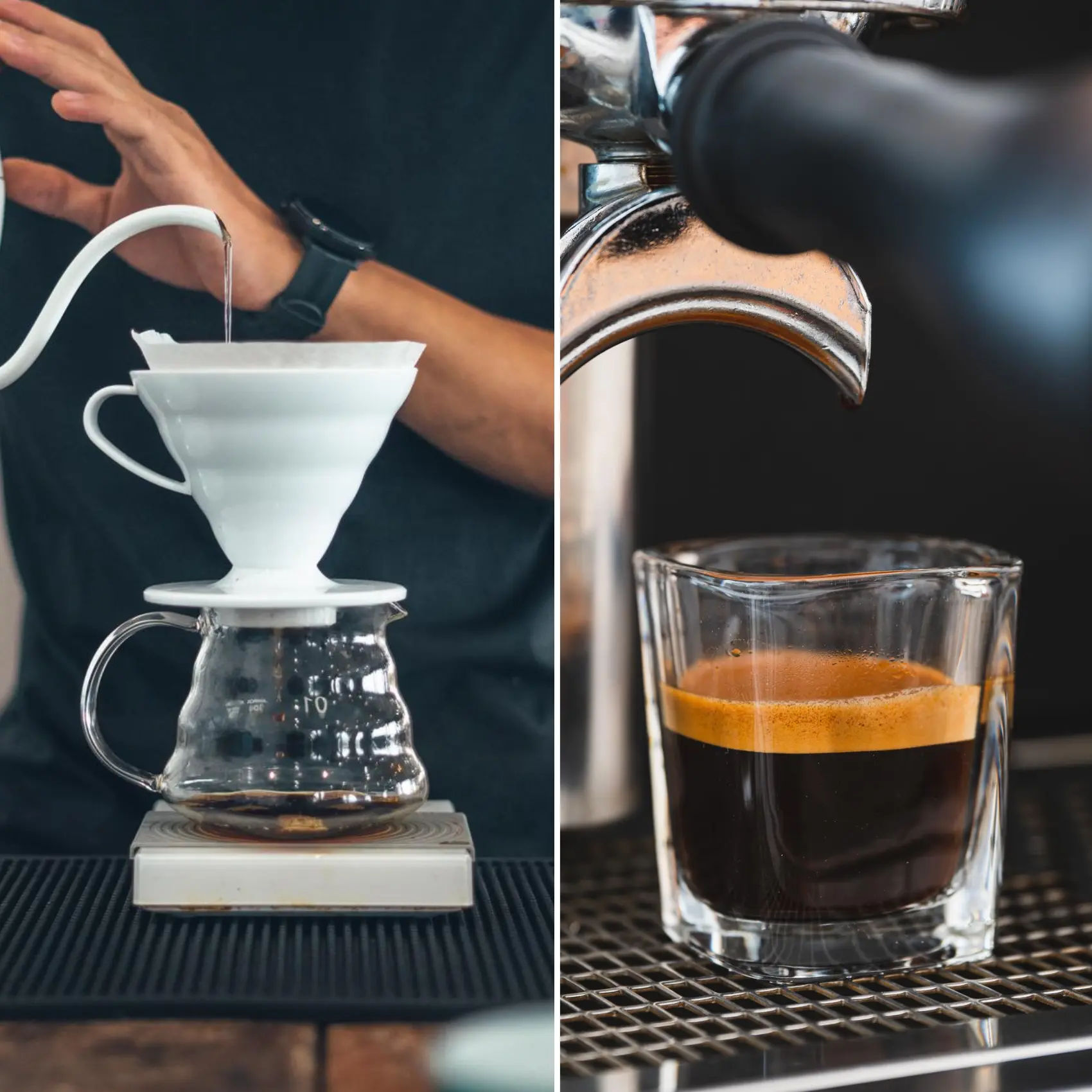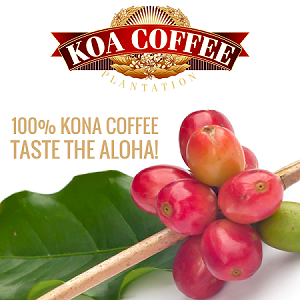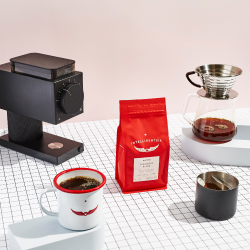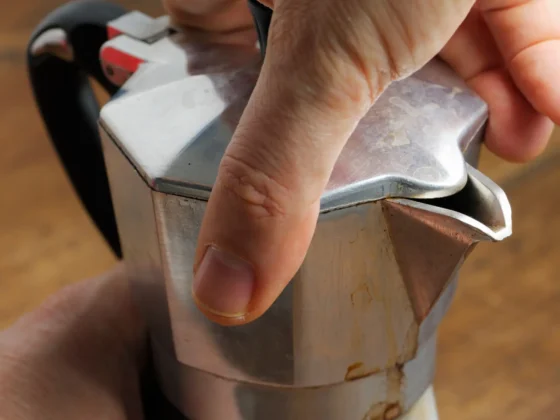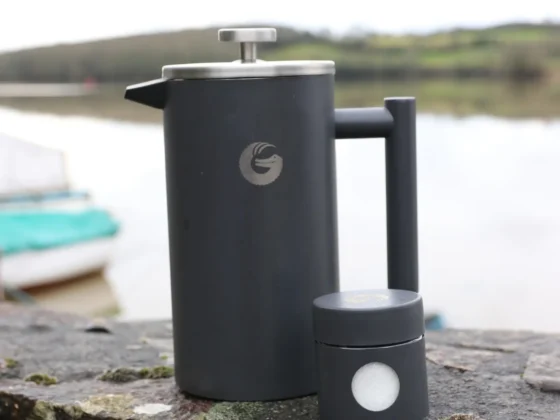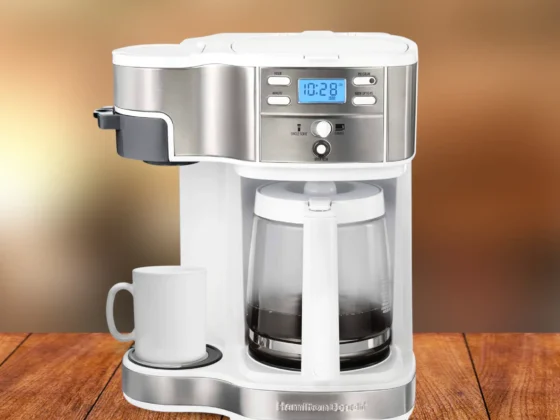The world of coffee is as intricate as it is invigorating, offering myriad experiences shaped by brewing techniques, bean origins, and cultural influences. At the heart of this universe lies a classic debate: pour over vs espresso. These two revered methods, often celebrated in cafes and households alike, bring forth distinct taste profiles and cultural narratives. While pour over coffee encapsulates the essence of mindfulness and craftsmanship, evoking a sense of journey through global coffees, espresso stands as the pulsating heartbeat of bustling cities and vibrant social gatherings. But the comparison doesn’t end at taste and culture; diving deeper, one discovers varying caffeine levels, nutritional benefits, and even myths surrounding these brews.
This article endeavors to unfurl the tapestry of these two iconic coffee brewing techniques, exploring their nuances, similarities, and the unique experiences they offer. Whether your palate leans towards the sophisticated pour over or the robust essence of espresso, this comprehensive comparison aims to enrich your understanding and appreciation of both.
Not in the mood for reading? Tune in to the audio version of the article below.
- Introduction & Key Takeaway
- https://app.mysoundwise.com/tracks/16992274781102805e.mp3
- Origins and History of Pour Over and Espresso
- https://app.mysoundwise.com/tracks/16992276058111563e.mp3
- Brewing Techniques and Equipment
- https://app.mysoundwise.com/tracks/16992276499190198e.mp3
- Flavor Profiles and Taste Differences
- https://app.mysoundwise.com/tracks/16992276969103984e.mp3
- Cultural Impact and Popularity
- https://app.mysoundwise.com/tracks/16992277271685139e.mp3
- Health Impacts and Caffeine Content
- https://app.mysoundwise.com/tracks/16992277845035403e.mp3
- Conclusion & FAQs
- https://app.mysoundwise.com/tracks/16992278071216614e.mp3
Espresso vs Pour Over: Key Differences
- Flavor Distinction: Pour over highlights delicate flavors, ideal for single-origin beans. Espresso, meanwhile, offers a strong, concentrated taste with rich undertones.
- Cultural Significance: Pour over represents mindfulness and craft, ensuring an intimate brew. Espresso aligns with the fast-paced urban lifestyle and is central to global social interactions.
- Health and Caffeine: Pour-over coffee contains 95 to 200 milligrams of caffeine per serving, while a single shot of espresso has about 63 milligrams. Both provide antioxidants and health benefits.
- Factors Influencing Taste: Taste in both methods depends on water quality, bean origin, roast, and grind. Adjusting these elements can alter the flavor significantly.
- Global Trends: Regions differ in coffee preferences, some favoring pour-over subtlety, others the strength of espresso. Yet, coffee universally connects cultures.
Origins and History of Pour Over and Espresso
Delving into the rich tapestry of coffee’s journey, it’s crucial to understand the evolution of various brewing techniques. These methods have been honed over centuries, deeply influenced by diverse cultures and the endless quest for the perfect cup.
Beginnings of Pour Over: The Japanese Influence
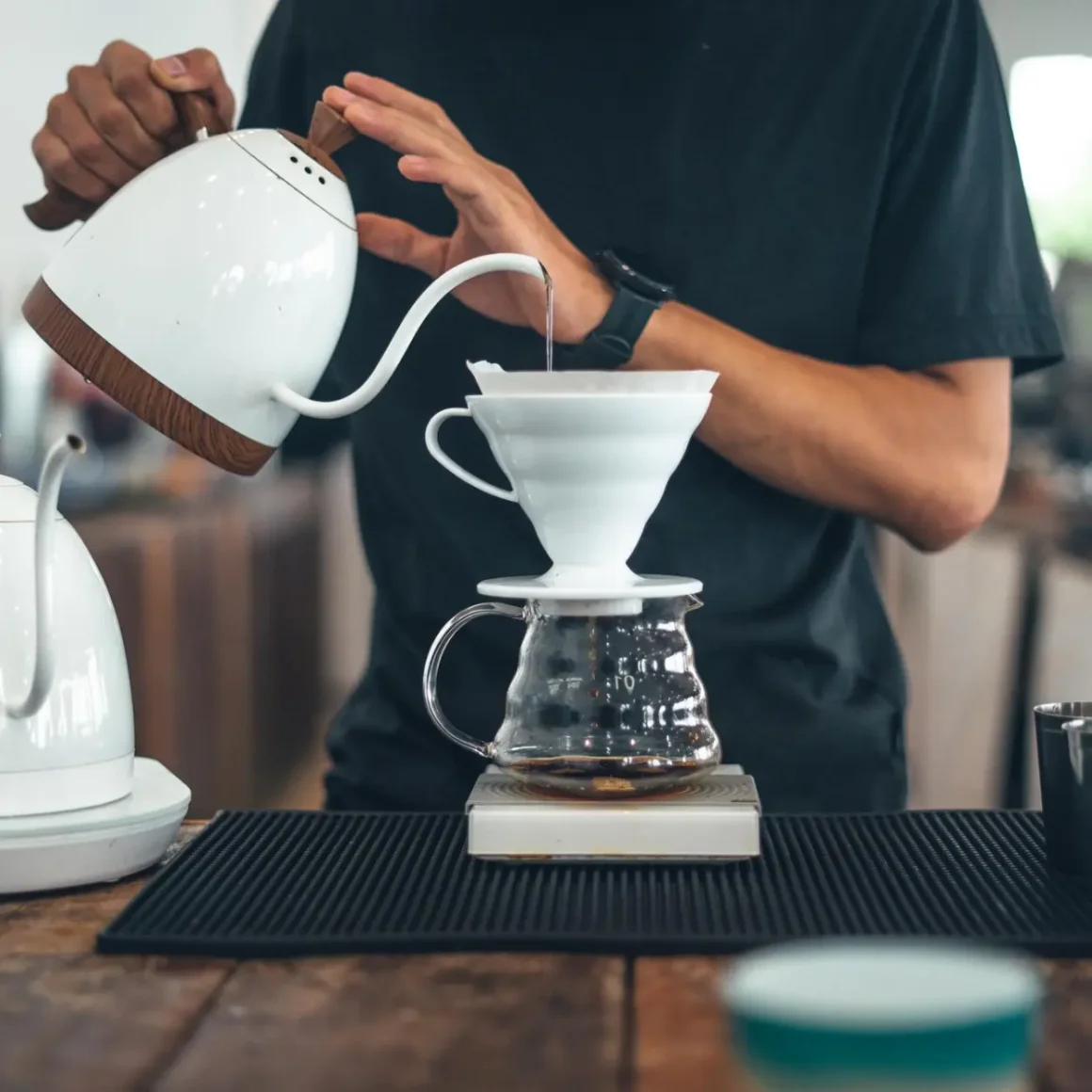
The art of pour over coffee, an esteemed brewing technique, has witnessed significant evolution over the years. While many techniques have surfaced across various cultures, it was Japan that undeniably left an indelible mark on this method.
- Melitta Bentz’s Innovation: Introduced around 1810, the percolator, which recirculates boiling water through coffee grounds, became popular in Europe. Unhappy with the percolator’s results, Amalie Auguste Melitta Bentz, in the 20th century, invented a new brewing method that laid the groundwork for pour over coffee, using blotting paper and a nail-pierced can.
- Hario and V60: Circa 2005, the Japanese firm Hario introduced the world to the V60, a unique drip method. Renowned primarily for their siphon brewers, Hario’s entrance into the realm of pour-over with the V60 caught the attention of coffee aficionados globally. The V60 filter system, accompanied by its signature true cone filter, became a sensation. (1)
- Blue Bottle’s Influence: Though many attribute the surge in popularity of drip methods to Blue Bottle Coffee Company, it’s essential to recognize the foundational role of online communities. While Blue Bottle excelled in marketing and had substantial media connections, it was the genuine enthusiasm of online forums and bloggers that propelled the method’s popularity.
- The resurgence of Chemex: By 2005, the American invention, Chemex, already experienced a revival. As Hario’s V60 garnered attention and accolades, the Chemex coffee system, with its unique circular paper filter, saw a renewed appreciation, particularly in the US.
The pour-over method, especially with the significant Japanese influence, has firmly rooted itself in the modern coffee culture, offering a delicate and nuanced coffee experience.
Espresso’s Italian Roots: A Revolution in Coffee Culture

The narrative of espresso begins in the 18th century, tracing a journey that revolutionized coffee culture globally, weaving its way through innovation and tradition. The rich history of this beloved beverage is marked by notable inventions and improvements that have shaped its presence in our daily lives.
- Initial Invention: The first espresso machine was crafted by Frenchman Louis Bernard Rabaut in 1822, which initiated the development of quick coffee preparation methods.
- Advancements in Paris: Edouard Loysel de Santais, another French inventor, advanced this technology in 1855 with a machine capable of brewing 2000 cups per hour, demonstrating the European focus on efficiency. (2)
- Turin’s Contribution: In 1884, Angelo Moriondo from Turin improved the machine and showcased his version at the Turin General Exposition, where it gained recognition and was used in prestigious venues.
- Milanese Improvements: Luigi Bezzera of Milan patented several enhancements to the espresso machine in 1901, which were commercialized by Desiderio Pavoni when he started the La Pavoni company, scaling up the production of these machines.
- The Birth of Automation: The move towards automation in espresso machines was pioneered by Francesco Illy in 1933 with the Illetta, using pressurized water, which laid the groundwork for modern espresso machines.
From its international origins to its Italian refinement, espresso has become a cornerstone of coffee culture, beloved for its rich flavor and the artistry it embodies.
Modern Day: The Rise of Specialty Coffee Shops
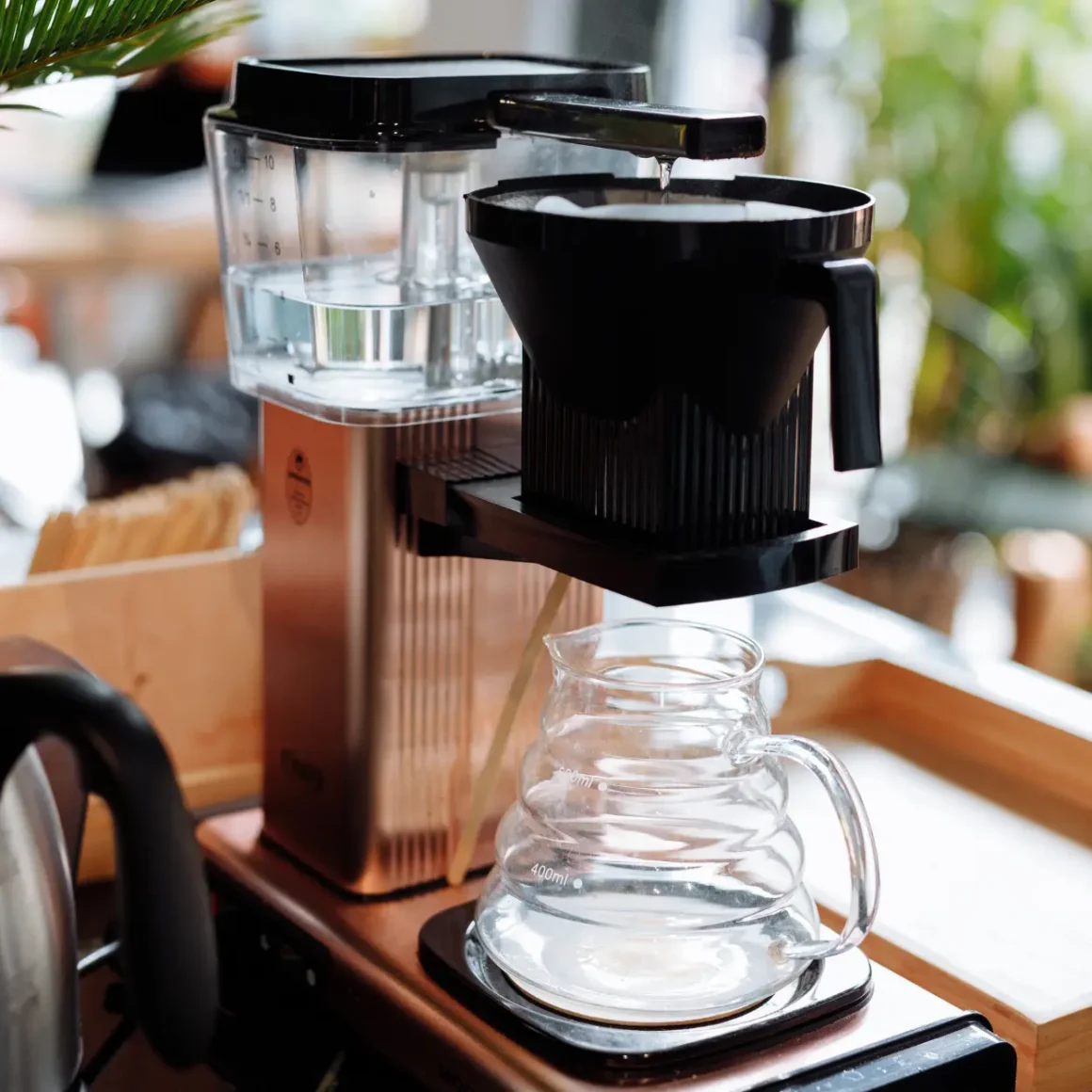
The contemporary coffee landscape is a melting pot of tradition and innovation, with specialty coffee shops playing a pivotal role in redefining coffee consumption.
- Auto Drip Revolution: The automatic drip coffee maker became an emblem of modern coffee brewing. While siphon brewers were prominent during the mid-20th century, the allure of convenience saw auto percolators rise to dominance in the 1950s, even if this sometimes meant a compromise in coffee quality.
- Third-Wave Coffee Shops: Around 2010 and 2011, specialty coffee shops, particularly third-wave establishments, began emphasizing the art and science of coffee brewing. Techniques like pour-over and siphon brewing became central to their offerings, making them a staple in these establishments.
- Global Acceptance: With the increasing prominence of specialty coffee shops, brewing methods like pour-over and espresso coffee have been celebrated worldwide, showcasing the fine balance between tradition and modernity in coffee culture.
Today, the symbiosis of traditional brewing methods and innovative techniques in specialty coffee shops has solidified coffee’s position as not just a beverage but an art form.
Pour Over vs Espresso: Brewing Techniques and Equipment
When diving into the world of coffee, one swiftly realizes that there’s an art and science behind every cup. Brewing is not merely about turning beans into a drinkable form; it’s about extracting flavors, adjusting textures, and customizing experiences. In this section, we explore the intricacies of brewing techniques, focusing on pour over and espresso, and the equipment essential for each method.
Pour Over Basics: From Grind to Brew

Pour-over brewing is a method that coffee aficionados and baristas love for its ability to bring out the subtle nuances and flavors of a coffee. Here’s a detailed look at how to make pour-over coffee:
- The Grind: To make pour-over coffee, begin with a medium-fine grind. A consistent grind size is key because it affects the surface area exposed to water, impacting extraction and, therefore, flavor.
- The Water Temperature: Ideally, the water should be just off the boil, around 195°F to 205°F, to properly extract the coffee flavors without scalding the grounds.
- The Pour Over Coffee Ratio: A general guideline for the pour over coffee ratio is about 1:17, which is approximately one part coffee to seventeen parts water. This ratio can be adjusted based on personal taste preferences and the specific coffee bean being used.
- The Bloom: Start with a slow pour to wet all the grounds, which allows the coffee to “bloom” or degas. This step is essential as it helps release any additional gases that could interfere with the extraction process. (3)
- The Pour: After the bloom, continue to pour slowly in a circular motion, ensuring an even saturation. This is where patience is key — the pour should be steady and controlled, allowing the water to evenly extract the coffee.
- The Time: The total brew time will vary, but a good target is between 3-4 minutes for most pour-over methods. This duration can be adjusted to modify the strength and flavor profile of the coffee.
By controlling each step of the pour-over process, you have the ability to craft a cup of coffee that is tailored to your personal taste.
Espresso Machines: Pressure, Temperature, and Timing
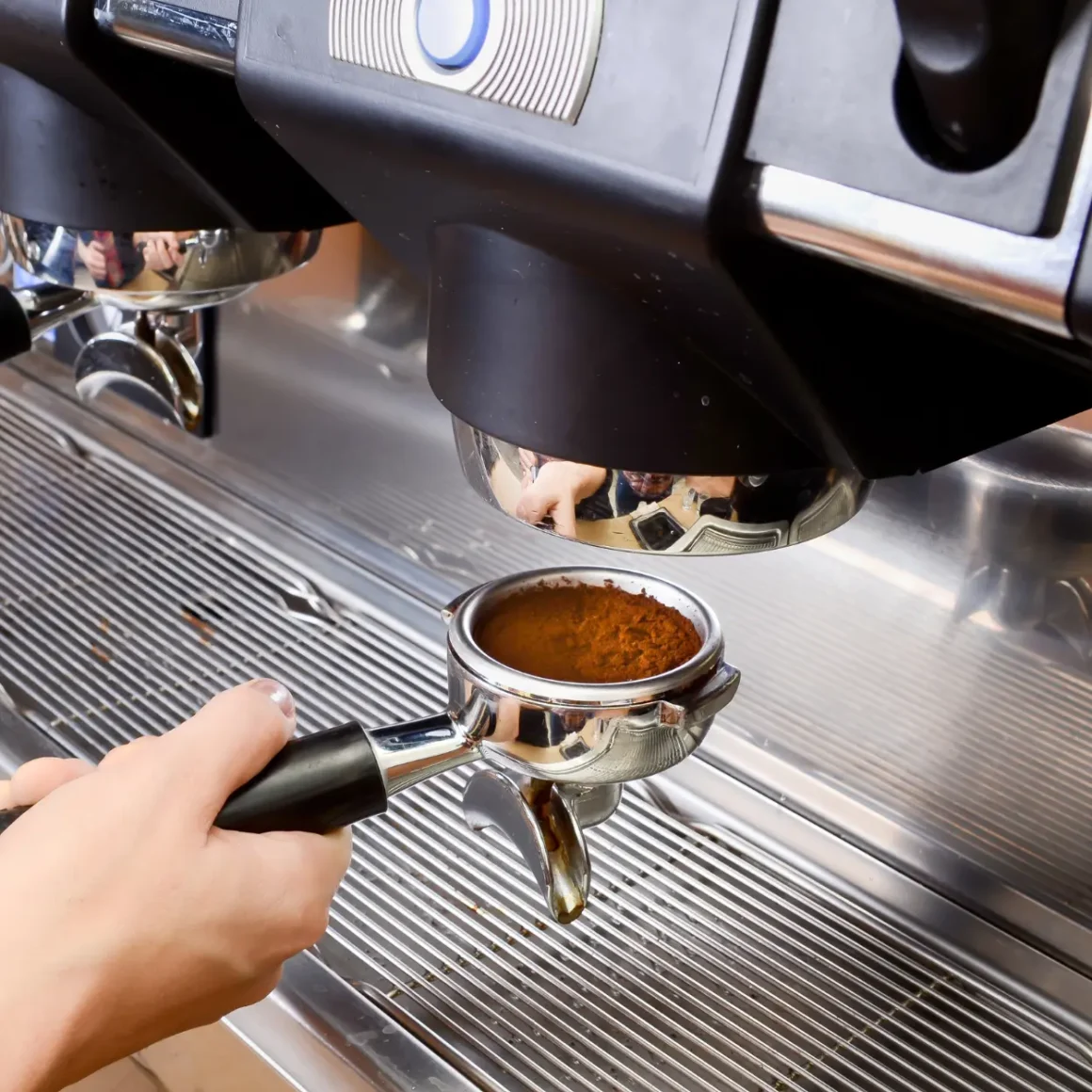
The art of espresso brewing is a meticulous process that combines precision and technique, resulting in a rich and robust coffee that’s become the foundation of countless coffee drinks.
- The Grind and Dose: For espresso, the coffee beans should be ground very finely, almost to the texture of powdered sugar. A standard shot of espresso typically uses about 7-9 grams of coffee. Getting the grind and dose right is crucial, as this affects the extraction time and the strength of the espresso.
- Tamping the Grounds: Once the coffee is in the portafilter, it needs to be tamped down with firm pressure to create a smooth, even surface. Proper tamping ensures that water will pass through the coffee grounds evenly.
- The Extraction: The machine should be preheated before starting the extraction, which involves water at 195°F to 205°F passing through the grounds under pressure. A well-extracted espresso will have a balance of flavors, without bitterness or sourness, and a rich body.
- Serving the Espresso: After the shot is pulled, it should be served immediately. The proper way to drink espresso is to first stir the shot gently to blend the crema with the rest of the coffee, then enjoy it in small sips to savor the intense flavors and aroma.
By mastering the espresso machine brewing technique, coffee lovers and baristas alike can enjoy the full potential of the coffee bean. Whether enjoyed on its own or as the base for another coffee creation, a well-brewed shot of espresso is a testament to the barista’s skill, and knowing how to drink espresso enhances this experience.
Must-Have Accessories: Scales, Filters, and Tampers
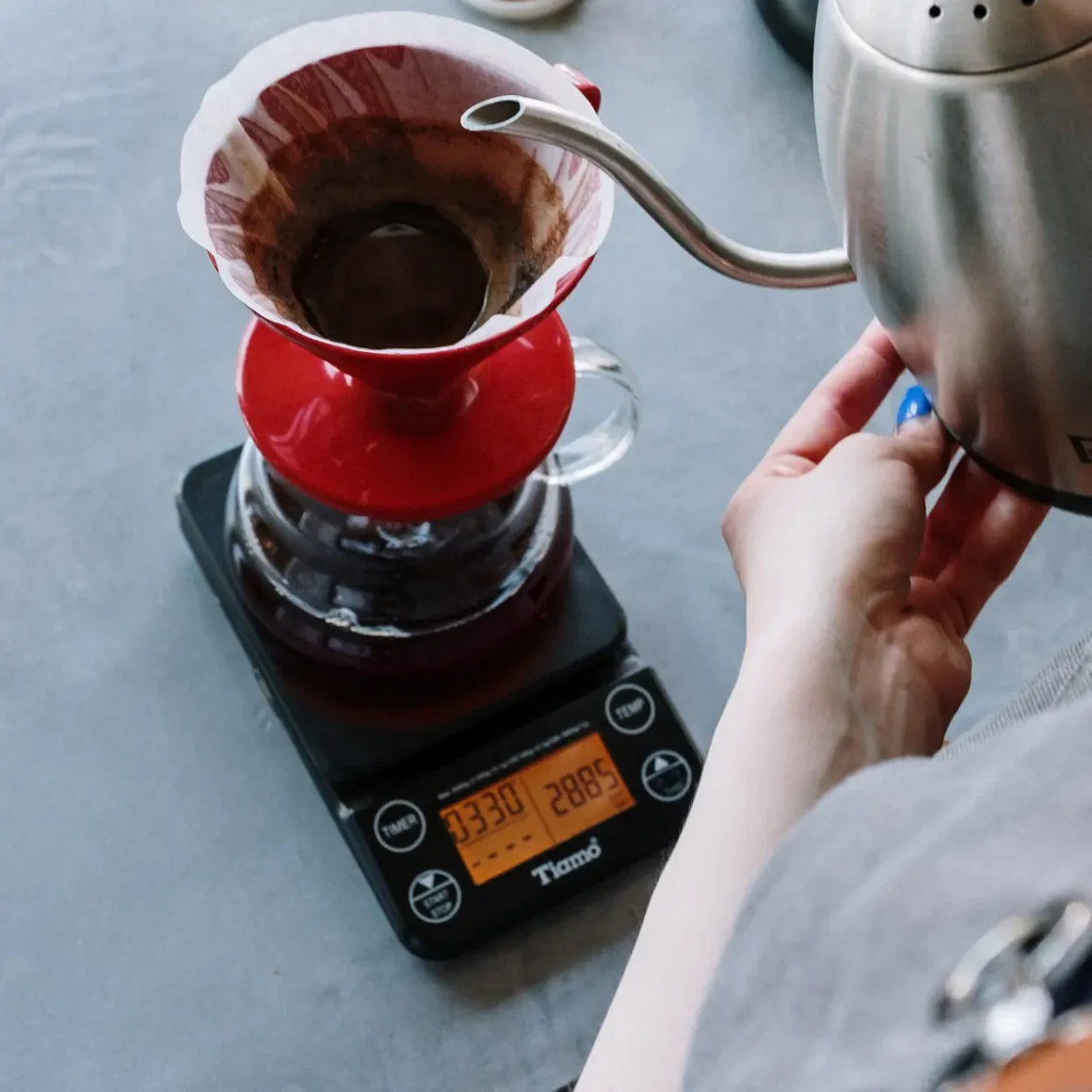
In the journey of coffee brewing, precision often dictates perfection. This section sheds light on the accessories that can make all the difference in achieving that perfect cup.
- Scales: A digital coffee scale can be a game-changer, especially for techniques like pour over. Measuring the coffee and water quantities ensures consistent ratios, leading to a consistent brew every time.
- Filters: As discussed, filters can vary from paper to metal to cloth. The choice of filter can influence the clarity, body, and taste of the coffee. For instance, a paper filter might be ideal for those who prefer a clean cup, while metal filters might suit those looking for a fuller body.
- Tampers: Essential for espresso enthusiasts, a tamper compresses the coffee grounds, ensuring uniform density. This ensures that water flows through the coffee puck evenly, leading to balanced extraction.
While the coffee bean and brewing method are essential, the tools and accessories used play an equally pivotal role in the coffee-making process. Investing in the right equipment can elevate the entire coffee experience.
Espresso vs Pour Over: Flavor Profiles and Taste Differences
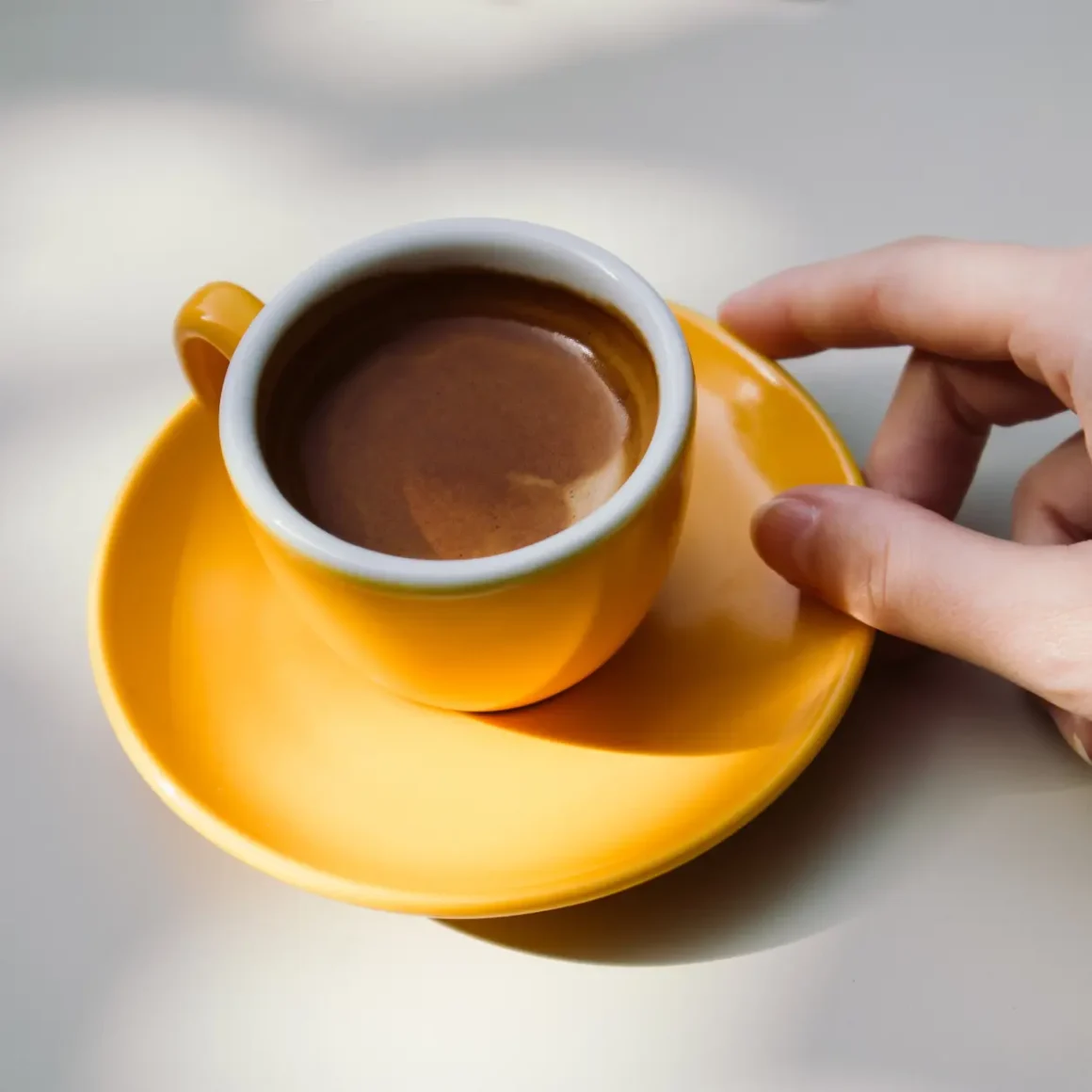
The world of coffee offers a tantalizing spectrum of flavors and aromas that are brought to life by varied brewing techniques. Whether one is an aficionado of the refined subtleties of pour over or the vigorous richness of espresso, it’s crucial to recognize the distinguishing characteristics of each brew. This section delves into the contrasting flavor profiles of these two popular methods and the myriad factors that shape their taste.
The Delicate Nuances of Pour Over Coffee
Pour over coffee has emerged as a favorite for many who appreciate its gentle and nuanced flavors. The methodology and precision that underpin the pour-over method are manifest in every sip, revealing flavors that range from the most subtle to the strikingly vibrant.
- Acidity and Vividness: Pour over, by virtue of its brewing technique, accentuates the acidity and bright notes of coffee. This makes it an exceptional choice for savoring the specific characteristics of single-origin beans.
- Best Coffee Filters for Pour Over: The filter used can greatly influence the taste and clarity of the brew. Paper filters, for instance, can emphasize brighter notes while cloth or metal might allow more oils, creating a richer taste.
In sum, pour over coffee offers a canvas on which the many nuances of a coffee bean can shine. It’s a method that caters to those seeking clarity, intricacy, and authenticity in their brew.
The Bold and Robust Flavors of Espresso
Espresso is the embodiment of coffee intensity. From its deep color to its potent taste, every aspect of espresso coffee screams vigor and dynamism.
- Intensity and Depth: Espresso is defined by its concentrated brewing process, which allows for a robust flavor profile, often filled with undertones of cocoa, toffee, and nuts.
- Crema: This dense, creamy layer, unique to espresso, not only adds to its visual appeal but also enriches the overall taste. Crema infuses beverages like café lattes, café cappuccinos, and americanos with an added dimension of texture and flavor.
- Inclusions: Espresso serves as the base for numerous drinks. When paired with frothed milk in concoctions like lattes, the powerful notes of the espresso are mellowed, creating a balanced and creamy delight.
To encapsulate, espresso is for those who crave a coffee experience that’s bold, rich, and undeniably impactful. It’s a journey of intensity in every sip.
Factors Influencing Taste: Water Quality, Bean Roast, and Grind Size
To grasp the essence of any coffee brew, it’s pivotal to understand the elements that contribute to its final taste. These elements, spanning from the origin of the beans to the texture of the grind, play crucial roles in the flavor journey.
- Coffee Bean Roast: Roasting is a transformative process that shapes the bean’s flavor palette. While light roasts often champion fruity and acidic profiles, darker roasts venture into the realms of cocoa, toffee, and deeper undertones. Notably, espresso often employs the darker spectrum of roasts to achieve its signature strength.
- Grind Consistency: The grind size directly influences the extraction process. Espresso calls for a fine, almost powdery consistency to ensure that the flavors are intensely extracted. On the other hand, pour-over techniques generally use a coarser grind, ensuring balanced extraction and a clear taste.
- Water Quality and Temperature: Using water of impeccable quality, with a balanced pH, is paramount. It preserves the coffee’s inherent aromas and notes. (4) Furthermore, the temperature can make or break the brew. Espresso machines typically harness water in the 190-205°F range, while pour-over thrives at slightly cooler temperatures, between 195-205°F.
In a nutshell, the journey from bean to cup is one of meticulous care and precision. Recognizing and respecting each influencing factor is key to unlocking the true potential of the coffee.
Cultural Impact and Popularity
Coffee, throughout history, has transcended being just a beverage; it’s an experience, a ritual, a conversation starter, and sometimes, even a solace. Both pour over coffee and espresso coffee, each with its unique preparation and flavor profile, have woven themselves into the cultural tapestry of societies around the globe. In this exploration, we will dive into the cultural significance, popularity, and global trends associated with these brewing methods.
Pour Over: A Symbol of Mindfulness and Craftsmanship
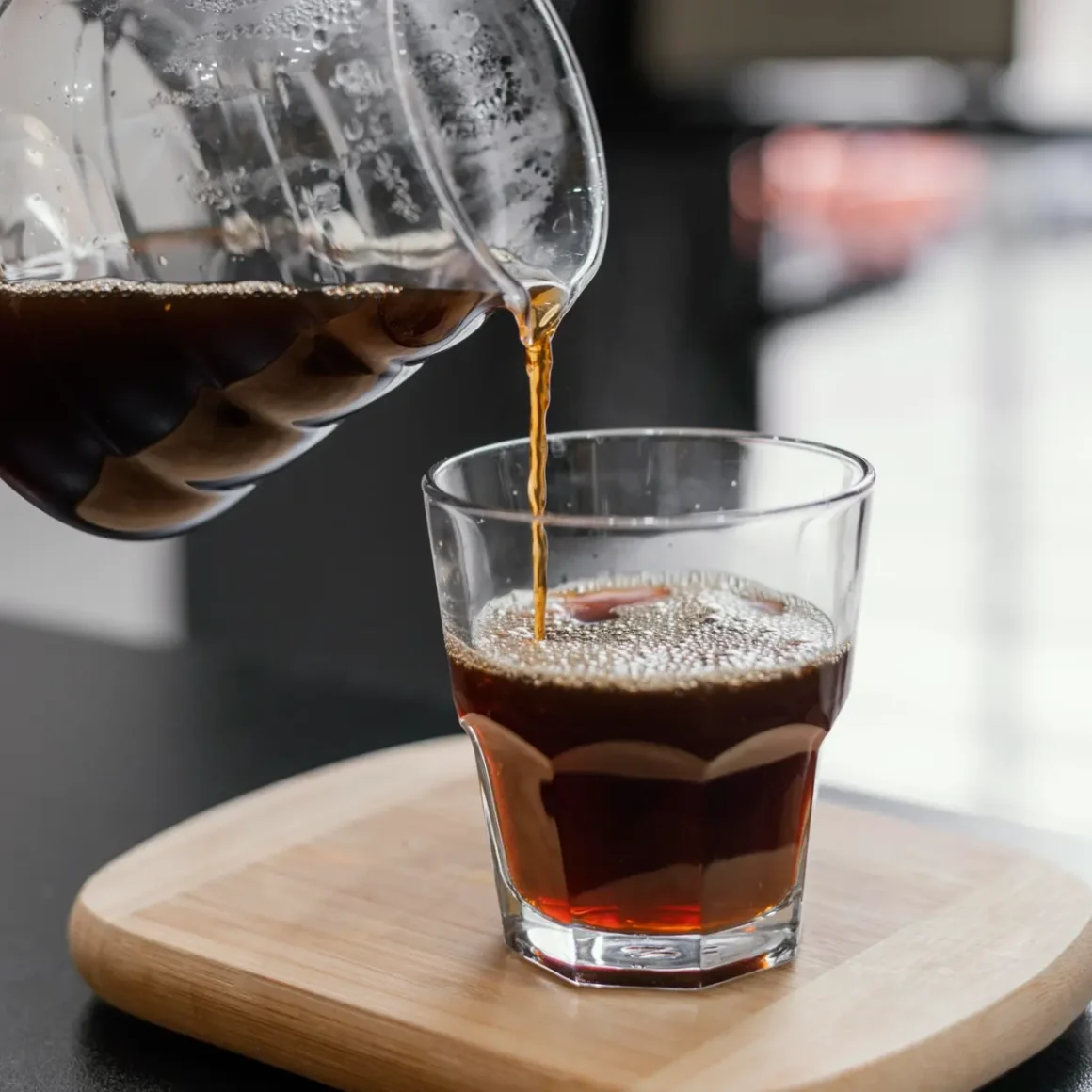
Pour over coffee isn’t just about the final cup; it’s about the journey. This brewing technique epitomizes patience, precision, and a deep appreciation for the art of coffee-making.
- A Ritual of Patience: The process of making pour over coffee requires a meticulous approach, from selecting the best coffee beans to the deliberate act of pouring water in a steady, circular motion. This ritualistic method promotes mindfulness and presence.
- Craftsmanship: Pour over celebrates the individual characteristics of coffee beans, often from a single source, allowing aficionados to travel through tastes of different regions, one cup at a time.
- Diversity in Flavor: With choices ranging from pure black coffee to the refreshing chilled pour over brew, this method caters to diverse palates, promising a bright and lively coffee drink every time.
In essence, pour over coffee is more than just a beverage; it’s an experience, a testament to the beauty of taking one’s time and cherishing the details.
Espresso: The Heartbeat of Busy Cities and Social Gatherings

In bustling urban centers and cozy cafés alike, the resonating hum of espresso machines marks a rhythm of modern life and social communion.
- A Quick Energy Surge: Espresso coffee, with its robust and potent nature, serves as a quick pick-me-up, fueling the pace of hectic city life.
- Foundation of Favorites: Espresso is the bedrock of many popular beverages. Whether it’s the creamy café cappuccino, the silky latte, the robust Americano, or the indulgent mocha, different espresso drinks have carved a special place in the hearts of many.
- Social Connector: Espresso bars and cafés have evolved as social hubs, spaces of collaboration, reflection, and connection, where stories unfold over steaming cups.
To summarize, espresso is not merely a brew; it’s the heartbeat of contemporary culture, bridging the gap between haste and leisure, solitude and companionship.
Global Coffee Trends: How the World Prefers Their Brew
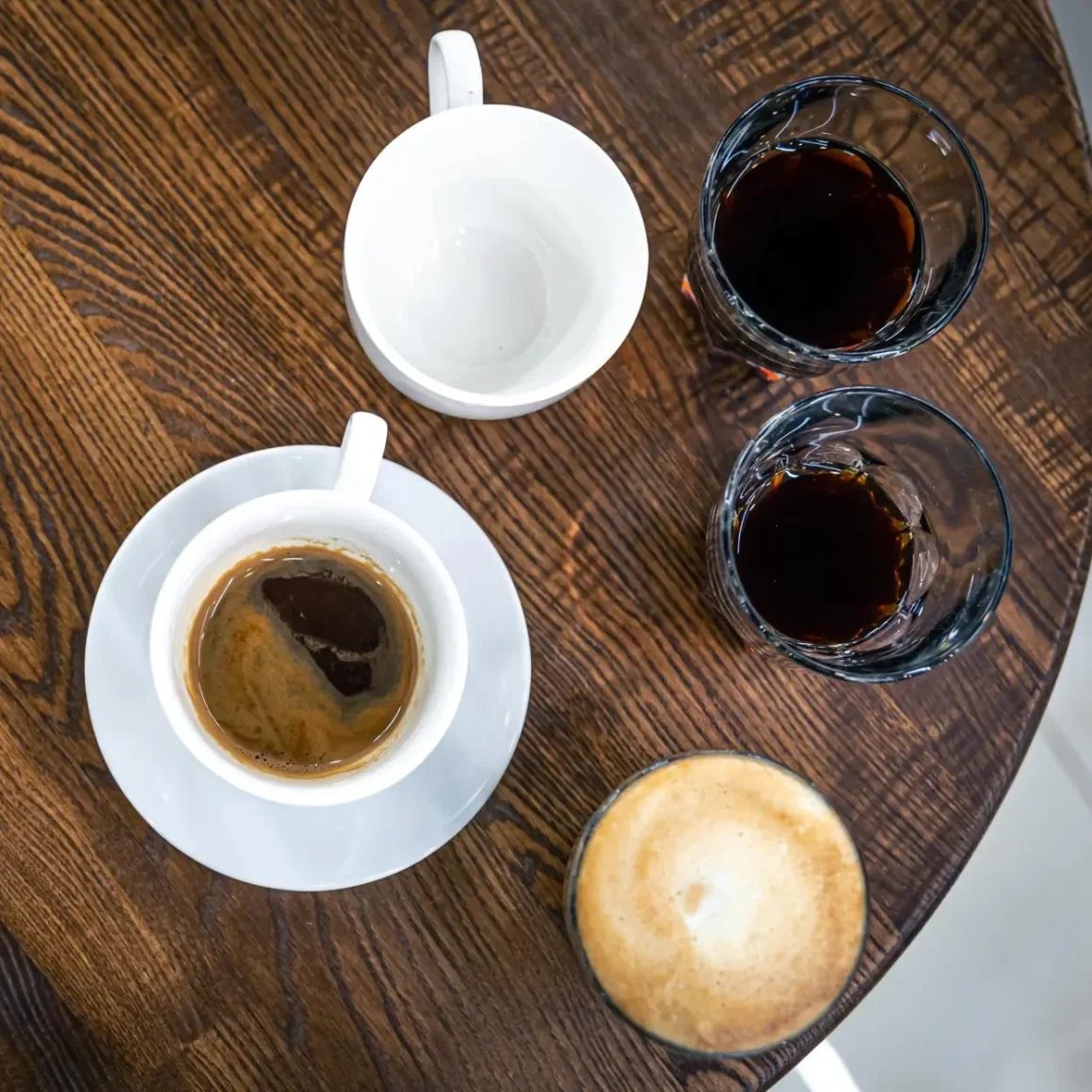
The world’s love affair with coffee is evident in the myriad ways people prefer their brew. As coffee culture evolves, so do the trends and preferences that define it.
- East Meets West: While traditionally Western countries have leaned towards espresso-based drinks, there’s a growing appreciation for pour over coffee. Conversely, countries in the East, known for their tea rituals, are embracing both espresso and pour over with gusto.
- Specialty and Artisanal Brews: As consumers become more discerning, there’s a surge in demand for the best coffee, sourced responsibly, and brewed to perfection.
- Health and Sustainability: With increasing consciousness about health and the environment, there’s a trend towards organic beans, sustainable farming practices, and eco-friendly packaging.
The world’s coffee preferences are as diverse as its cultures. Yet, in this diversity, there lies a common thread – an unwavering love for the brew, be it pour over or espresso, that brings people together and keeps them going.
Health Impacts and Caffeine Content

The allure of coffee goes beyond its robust flavors and aromatic charm. Over time, discussions around coffee have been as much about its health implications as its taste profiles. Whether you’re sipping an espresso or a pour over, understanding the health impacts, especially in relation to caffeine content, can enhance the coffee experience. Let’s delve deeper into the intricate relationship between brewing techniques and the health nuances they bring to the table.
Caffeine Levels: Pour Over vs Espresso
Coffee, in its myriad forms, is a renowned source of caffeine, a natural stimulant. However, the caffeine content can vary depending on the brewing method and serving size.
- Pour Over: This method involves prolonged contact between water and coffee grounds, which can lead to a higher caffeine extraction overall. However, since pour-over servings are generally larger (typically around 12 to 24 ounces with approximately 95 to 200 milligrams of caffeine), the caffeine concentration is often less intense per ounce, averaging about 15-20 milligrams per ounce.
- Espresso: Espresso uses pressure to quickly extract flavors, including caffeine, from the coffee grounds. As a result, an espresso shot, which is about 1 ounce (30 milliliters), typically contains a concentrated dose of caffeine, approximately 63 milligrams. This means that espresso has a higher caffeine concentration per ounce compared to pour-over coffee, which is why the espresso vs pour over debate often boils down to a choice between intensity and volume.
In essence, while an espresso shot may feel like a quick jolt of energy due to its concentrated nature, a pour over offers a more extended, albeit milder, caffeine experience.
Nutritional Benefits: Antioxidants and More
Coffee is not just about the buzz; it’s brimming with components that can have potential health benefits.
- Rich in Antioxidants: Both pour over and espresso coffee are rich in bioactive compounds like chlorogenic acid, which are known for their antioxidant properties. These help in combatting free radicals in the body.
- Mental Alertness: The caffeine in coffee is a known cognitive enhancer, improving alertness and short-term recall.
- Metabolic Boost: Regular, moderate coffee consumption can enhance metabolic rate and fat oxidation, aiding in weight management.
Overall, while moderation is the key, a cup of coffee does more than just awaken the senses; it might very well be a brew of wellness.
Myths Debunked: Addressing Common Health Concerns
Coffee, despite its global adoration, is not without its share of myths and misconceptions, especially when it comes to health.
- Acidity Concerns: There’s a common belief that coffee is highly acidic and harmful to the stomach. While coffee is mildly acidic, its pH is fairly neutral. Factors like roast level, grind size, and brewing time can influence acidity, but in general, a well-prepared cup is unlikely to cause harm to most individuals.
- Bone Health: Some myths suggest that coffee leaches calcium from bones. Scientific evidence, however, indicates that any potential calcium loss is minimal and can be offset by a balanced diet.
- Sleep Disruption: While it’s true that caffeine can interfere with sleep, its effects are largely dose-dependent and individualistic. By being mindful of one’s own tolerance and avoiding coffee close to bedtime, most can enjoy their brew without nighttime disturbances.
While it’s essential to enjoy coffee in moderation and be aware of one’s own body responses, many common health concerns associated with it are often based on half-truths. As with many things in life, a balanced approach to coffee can yield both pleasure and wellness.
Conclusion
Navigating the world of coffee can be as much an art as it is a science, with each brew offering its unique symphony of flavors, aromas, and experiences. In our deep dive into pour over vs espresso, we’ve unearthed the myriad facets that distinguish and unite these brewing methods. From the delicate nuances of pour over, reminiscent of mindfulness and craftsmanship, to the bold undertones of espresso echoing the vibrancy of urban life and social bonds, each method tells a story. Beyond taste, the cultural, health, and caffeine nuances further delineate their identities. Yet, regardless of one’s preference, it’s evident that both methods have carved indelible marks in the global coffee landscape.
As we sip our chosen brews, it’s worth remembering that whether you’re in the company of a meticulously crafted pour over or a robust shot of espresso, you’re partaking in a rich tapestry of history, culture, and flavor that has been cherished for generations.
FAQ
Which method extracts more flavors from the coffee beans?
Pour over extracts a wider range of delicate flavors, whereas espresso extracts bold, concentrated ones.
Can you use the same coffee beans for pour over and espresso?
Yes, but the grind size and roast level might differ for optimal results with each method.
What's the cost difference between setting up a pour over and an espresso station at home?
Setting up a pour over station is generally less expensive, while espresso setups can vary widely in cost, often being pricier.
How do baristas feel about the pour over and espresso debate?
Baristas have varied opinions; some appreciate pour-over's craftsmanship, while others favor espresso's intensity and versatility.
